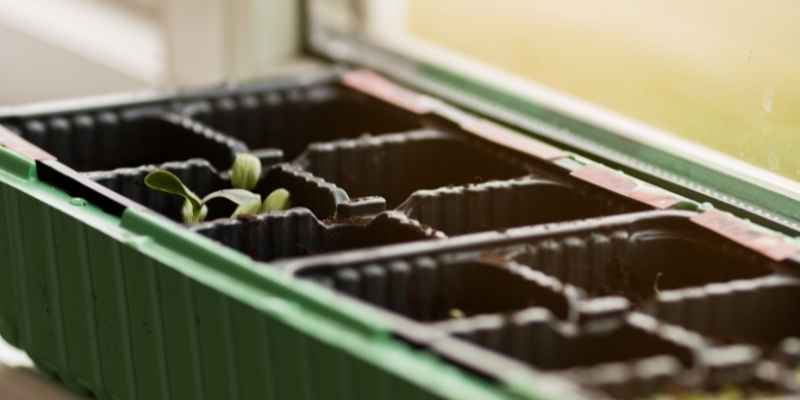Gaillardia is a perennial, biennial or annual depending on variety, valued for its exceptionally long summer flowering. It unfolds daisy-like blooms in warm summer colours until first frosts. It is used as an edge for a country-style bed, in every corner of informal gardens to create colourful mixed plantings requiring minimal care.
This pretty undemanding plant is easy to grow in full sun, and can be sown easily in light, well-drained soils, even stony or calcareous.
To guide you step by step, discover in our tutorial how to sow Gaillardia annual or perennial seeds, under cover or directly in ground in garden.

When to sow Gaillardia seeds?
Gaillardia seeds are sown in spring; however sowing period varies according to method used.
Sowing Gaillardia under heated cover
Gaillardia seeds are sown from March to May under heated cover or in a heated mini greenhouse. They require a temperature of 20°C to germinate. This type of early spring sowing produces earlier flowering. Transplant the sturdiest seedlings into garden once risk of frost has passed.
Direct sowing in open ground
Gaillardia can also be sown directly in place when hard frosts are no longer likely, generally after the Saints de Glace, that is after mid-May. From May to June you can sow seeds directly in garden in open ground.

What equipment to use?
Depending on chosen method, prepare following equipment:
- mini greenhouse, a seed tray or biodegradable seeding trays
- seed and transplant compost
- a sprayer
- transplanting trowel for pricking out seedlings
- broadfork
When and how to harvest Gaillardia seeds?
You can use our Gaillardia seeds or seeds you have harvested from garden. These are harvested when heads have faded. Cut heads and dry them. When completely dry, carefully recover seeds by shaking heads over a clean cloth. Store them until sowing in an airtight container or in a paper envelope, protected from light and heat. Sow harvested seeds in spring.
How to sow Gaillardia?
To create colourful, cheerful displays, you can mix different Gaillardia varieties together.
Sowing in trays
- Prepare trays by filling with seed compost or multipurpose compost
- Scatter seeds evenly
- Cover them lightly (1/2 cm) with a layer of finely sieved compost
- Firm down lightly
- Keep substrate just moist until germination
- Cover (transparent lid, plastic bag, pane of glass…) to retain moisture and warmth and encourage germination which generally takes 18 days
- Keep trays in light because seeds need light to germinate but avoid direct sun, at a temperature of at least 20°C
- Ventilate regularly
Transplanting
When sturdy enough to handle and well rooted, transplant seedlings with a transplanting trowel directly into garden from May onwards. Space young plants at least 30 cm apart. You can also perform intermediate transplanting into biodegradable pots and buckets filled with compost if outside planting is not yet possible due to low temperatures.
If you want to grow Gaillardia in pots or window boxes: transplant into a free-draining mix of compost for flowering plants and coarse sand.
Sowing in open ground in pockets
Choose a warm, sunny position for Gaillardia. Direct sowing is done in pockets and requires prior soil preparation. Soil should be well worked, light and warmed.
- Loosen soil without turning it using a broadfork
- Remove large stones, roots and weeds
- Dig small holes 2 to 3 cm deep with a hoe every 30 cm or so
- Sow 2 or 3 Gaillardia seeds per pocket
- Backfill each hole with soil
- Water with a fine spray so as not to displace seeds then water regularly to keep soil moist until emergence
- Seedlings develop in about 10 to 20 days on average
- When at four-leaf stage, thin young plants to keep only the sturdiest per pocket
- Ensure soil remains moist but not waterlogged during first weeks after sowing
For further information
- Discover our full sheet on growing Gaillardia as well as our advice for successful sowing of annual seeds.
































Comments